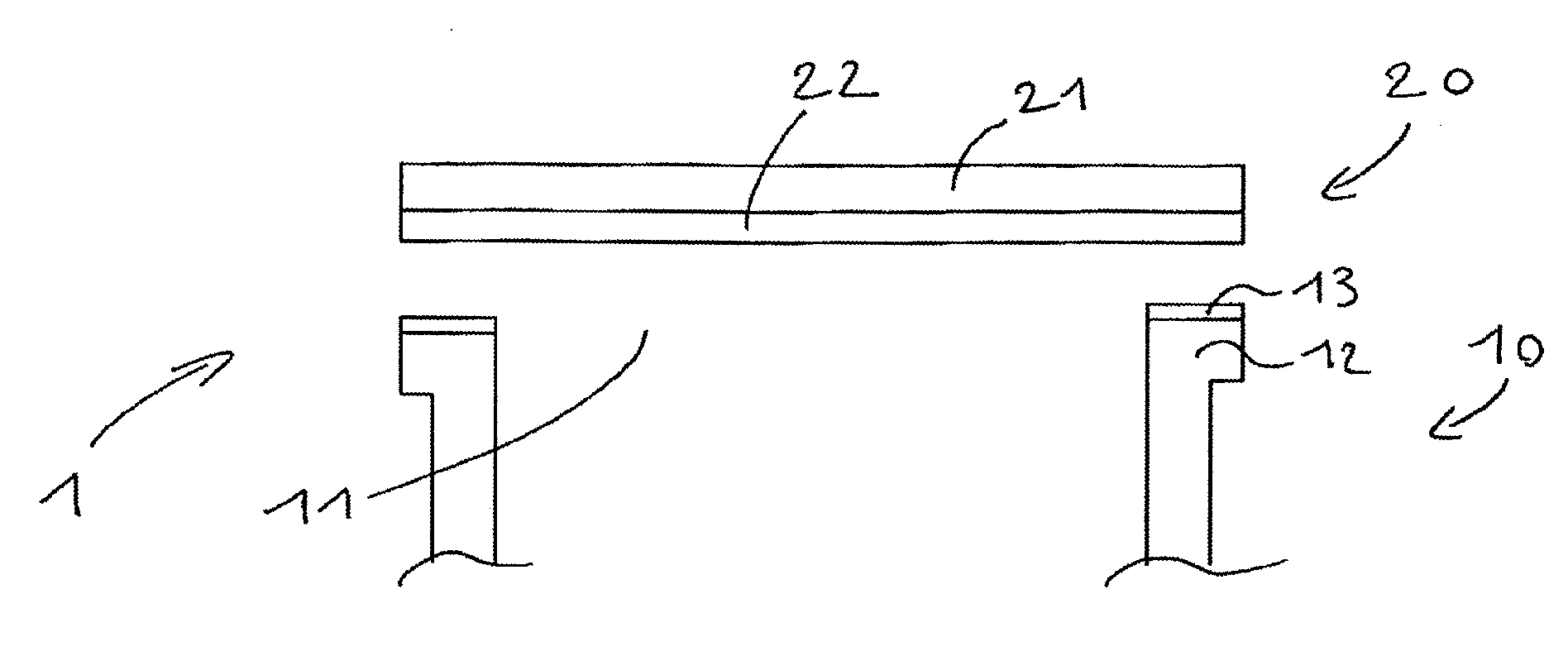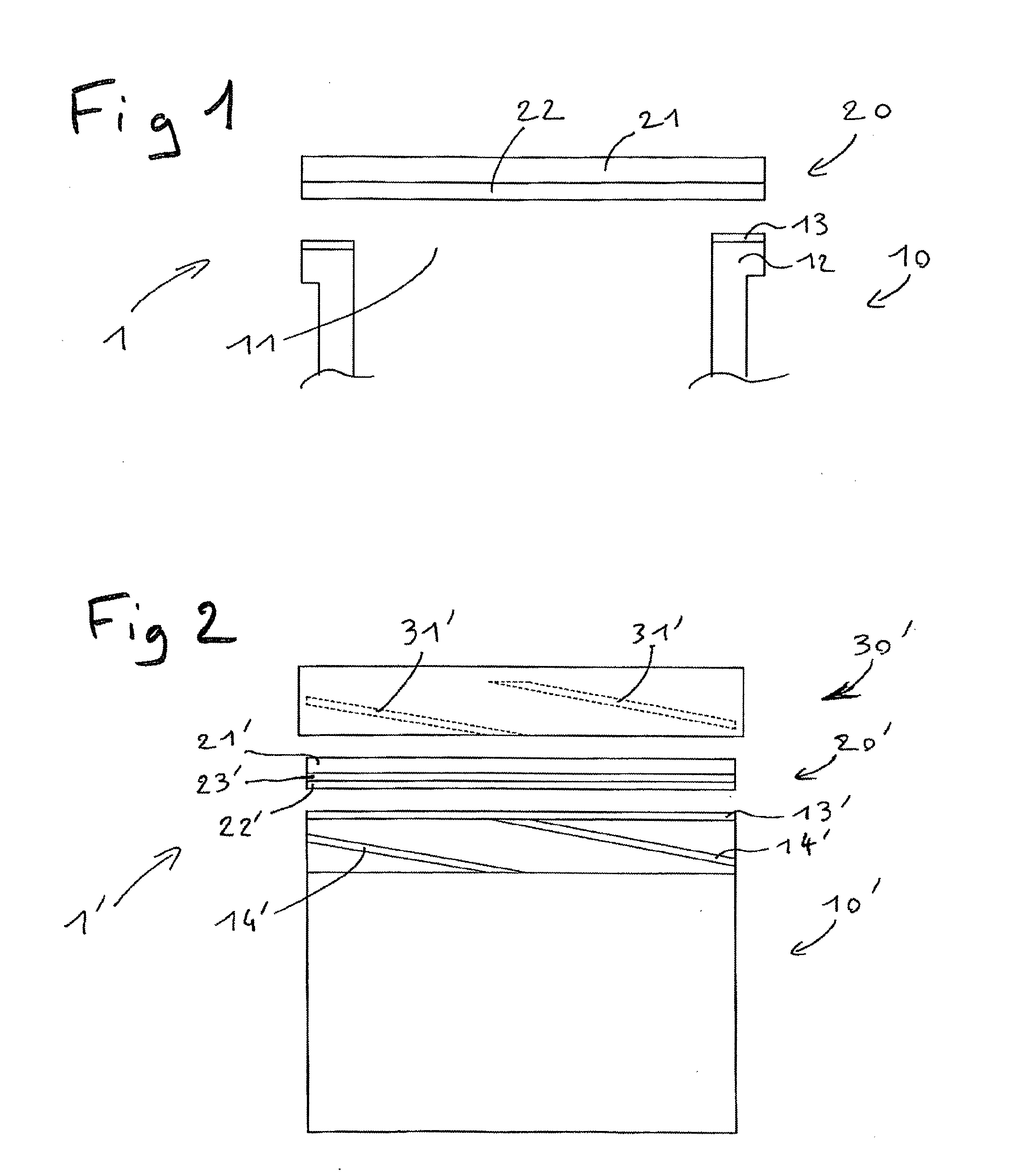Sealing of a cap on a glass container
a glass container and sealing technology, applied in the field of hermetic sealing of glass containers, can solve the problems of thermoplastic and glass container adhesion, general difficulty in opening packaging, and high cost of solution
- Summary
- Abstract
- Description
- Claims
- Application Information
AI Technical Summary
Benefits of technology
Problems solved by technology
Method used
Image
Examples
Embodiment Construction
[0009]For this purpose, the subject of the invention is a multi-layer sheet designed for sealing a glass container by heat sealing onto the sealing ring of the container treated by means of oxides and / or metal salts and comprising at least one support layer and a lower layer made of a polymeric heat-sealable material onto which is grafted an unsaturated carboxylic acid, characterized in that this polymeric heat-sealable material has a melting point higher than 115° C. It has been noted that the unsaturated carboxylic acid grafted onto the polymeric heat-sealable material forms strong bonds with metal oxides and / or salts so that the adhesion of the lower layer onto the sealing ring of the glass container is improved and allows satisfactory hermetic closure of the composite packaging. Such a lower layer has in addition low toxicity, unlike many adhesives containing solvents, and makes this composite packaging perfectly suited for packaging products for food use. Also, adhesion is adva...
PUM
| Property | Measurement | Unit |
|---|---|---|
| melting point | aaaaa | aaaaa |
| temperature | aaaaa | aaaaa |
| temperature | aaaaa | aaaaa |
Abstract
Description
Claims
Application Information
 Login to View More
Login to View More - R&D
- Intellectual Property
- Life Sciences
- Materials
- Tech Scout
- Unparalleled Data Quality
- Higher Quality Content
- 60% Fewer Hallucinations
Browse by: Latest US Patents, China's latest patents, Technical Efficacy Thesaurus, Application Domain, Technology Topic, Popular Technical Reports.
© 2025 PatSnap. All rights reserved.Legal|Privacy policy|Modern Slavery Act Transparency Statement|Sitemap|About US| Contact US: help@patsnap.com


